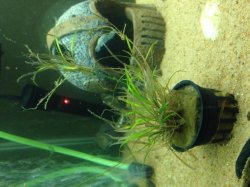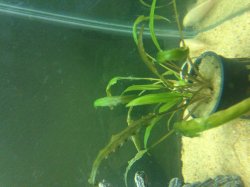OK, I am going to suggest a different tube. I know there are comments on the Fosters&Smith website from those who say their plants do well, but I am hesitant. This tube has a Kelvin of 4000K-5000K, according to fosters&Smith, and I consider that low. I believe this is the same tube that came with my Aqueon 29g tank hood, and it went to recycling after I turned it on. The problem with these so-called plant or aquarium tubes is the weakness of the light intensity. I have experimented with several over the past few years, and none were worth it.
You would be better with a tube in the 6000-6500K range. ZooMed make one, called Ultra Sun, that is 6500K. And there is the Hagen Life-Glo at 6700K. I use the latter on all my single-tube tanks, but the ZooMed I mentioned is near-equal. You should be able to find one or both of these in a fish store. Take the Aqueon tube with you to ensure you get the correct length. And in T8 of course.
These two tubes are high in the red, blue and green. Red and blue are necessary to drive photosynthesis in aquatic plants, but studies have proven that adding green to the mix does improve the plants' response. Green does not impact photosynthesis like red and blue, but the added brightness seems to provide the additional intensity. These tubes are the closest to mid-day sun.
The Aqueon liquid fertilizer should be OK; not everything is included, but it has several nutrients and may be sufficient to supplement. If things don't improve with the new light, we could look at other comprehensive supplements but for the moment I would use what you have. The GH is fine (this has to do with the so-called "hard" minerals that are present in most tap water, and a GH of 4 or above will be fine in this aspect).
On the light, 8 hours should not be too much, but make sure the aquarium receives several hours of total and complete darkness, meaning tank light off and a dark room with no lighting. This is essential for the fish as well as the plants, to keep the circadian rhythm stable.
Byron.




 /www.amazon.com/Flourish-50-1-7-fl-oz/dp/B0006JLX5G/ref=sr_1_1?ie=UTF8&qid=1459099764&sr=8-1&keywords=flourish+comprehensive+50ml
/www.amazon.com/Flourish-50-1-7-fl-oz/dp/B0006JLX5G/ref=sr_1_1?ie=UTF8&qid=1459099764&sr=8-1&keywords=flourish+comprehensive+50ml